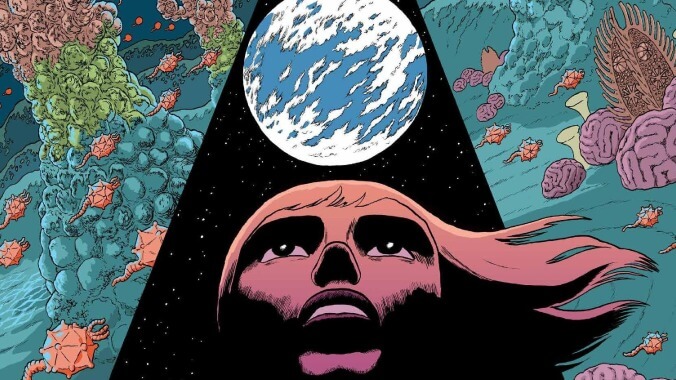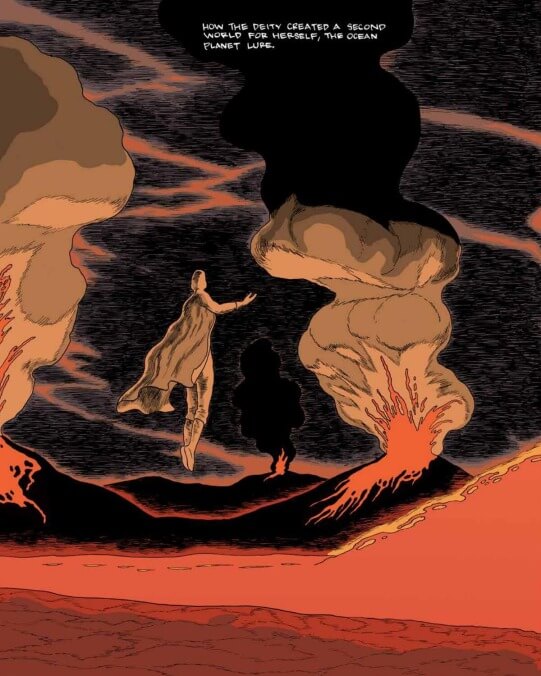Lane Milburn’s Lure is a fantastic graphic novel of environmental anxiety
The author’s new graphic novel is a touching and brilliant look at how capitalist forces co-opt artistic creativity—and stymie positive change

The beginning of Lure depicts an unnamed deity coming from the stars to an alternate universe Earth in the Hadean eon, its earliest stage. The deity then creates a nearby ocean planet, Lure, from out of the volcanic Earth. Cut to billions of years later: Jo Sparta is a struggling holograph artist looking for a new beginning after a breakup. She decides to accept an offer to produce a large scale art project for a company named P, which is beginning to prepare the alien planet Lure to shelter the rich and powerful as this alternate Earth is besieged by the same climate issues as ours.
Beautiful down to the very pattern and usage of the nine-panel grid, Lure artistically explores the concept of beginnings. It can be understood as an allegorical narrative that criticizes the current trend amongst billionaires to fantasize about escaping Earth’s climate catastrophes in space. But it’s far more than that: It guttingly captures the desolation of climate dread in the depths of its characters.
With panels reminiscent of Un Chien Andalou by Luis Buñuel, Salvador Dali, and 2001: A Space Odyssey, Lure can perhaps best be considered surrealist sci-fi. That surrealism is felt in the deeper sense of mystery that runs through the book: Key plot details are intentionally only intimated, and several theories are presented in-universe as to what is going on, but none are ever validated. This mystery, and general aura of uncertainty, is resonant both narratively and as allegory for the suppression of climate science by various oil and gas corporations.
Lane Milburn’s scenic, unnatural backdrops are particularly evocative of the work of Moebius. Though many technological marvels litter the book, the star attraction is holography. Jo’s love of holography, and its tension with the larger corporate purpose of P, is one of the main narrative threads of the book. Lure aesthetically ties holography to comics, as Milburn uses the nine-panel grid to explore how an actual three-dimensional laser hologram, versus the two dimensional illusions currently available, would move in a given space. Additionally, starfish imagery litters the pages of Lure. Just as a starfish can regenerate from any piece that’s cut off, any part of a hologram contains all the information of the depicted image.
But Lure also teaches the reader to learn from its very structure. Milburn repeats the comic rhythm of its opening pages again and again throughout crucial moments in the book. Generally, splash pages give way to pages with more and more paneling, until a nine-panel grid is reached and the pattern starts back up in reverse. In regards to the current moment of frequent climate catastrophes, a cynical interpretation of Lure would declare it fatalistic.
Perhaps it’s too hopeful a reading, but it’s not ridiculous to suggest that Lure—even down to its fundamental comic elements—is obsessed with beginnings. Not to paint doom as inevitable, but to emphasize that immediate action must be taken against those willing to destroy the environment. As a Giacometti quote included in Lure states, “It’s never a question of finishing anything, but of knowing truly how to begin, because if I could ever begin something properly, the work would be very nearly finished.”
